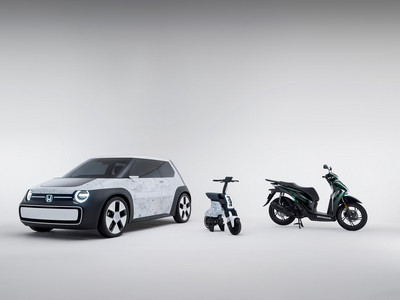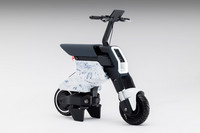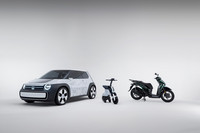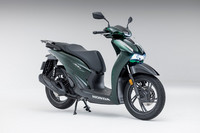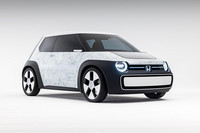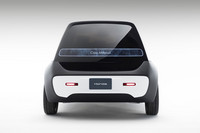Honda showcases vision for more sustainable product design at Milan Design Week
- tags
- environment
- honda
- more
Date: 23/04/2024
Honda showcased its evolving approach to more sustainable product design with the European premiere of its latest electrified urban vehicle concepts - the SUSTAINA-C Concept car and Pocket Concept motorcycle - at Milan Design Week from 16-21 April. Both star alongside the SH125i 'Vetro' scooter to demonstrate the innovative material use and unique design aesthetics that can be created while reducing the CO2 emissions.
As first shown at the 2024 Japan Mobility Show, the SUSTAINA-C Concept explores how society could be freed from the constraints of finite resources. It comes paired with the Pocket Concept, a compact motorcycle that can be stored in the luggage compartment and provide last mile mobility.
The panels are manufactured using recycled acrylic resin sourced from second-hand taillights to create exterior panels that do not require painting, allowing Honda to create a unique, unpainted finish that would not be possible with traditional materials. This material approach could reduce emissions during production by up to 45% - partly via the recycled materials in use, but also in leaving the panels unpainted, which can account for as much as 80% of the CO2 emissions from an automobile factory.
The model on show in Milan features a black and white marble effect, achieved by mixing colours with different melting points into the panels as they are moulded - leaving a marbling behind as the material settles into the mould.
Alongside their eye-catching appearance, not only are the vehicle panels crack resistant and able to return to their original shape following light collisions, but they also offer a high level of weather resistance with minimal degradation from sunlight.
At the rear, the acrylic resin's excellent transparency has allowed for the SUSTAINA-C Concept's tailgate to be formed out of a single panel that acts like a smartphone screen. The mini-LED display has been designed to communicate with other road users via simple text or imagery, thereby offering a potential new dimension for the exterior design of future vehicles.
Finally, the acrylic resin being used demonstrates a possible approach to future resource circulation. Developed in partnership with Mitsubishi Chemical, when the second-hand taillights are sourced from end-of-life vehicles, they are crushed and treated, before being moulded into the panels required for the SUSTAINA-C Concept. This is one way Honda is looking to reduce resource extraction and part of its exploration into more energy-efficient, low-carbon, cost-effective advanced recycling technologies and the creation of a vehicle-to-vehicle circular value chain.
